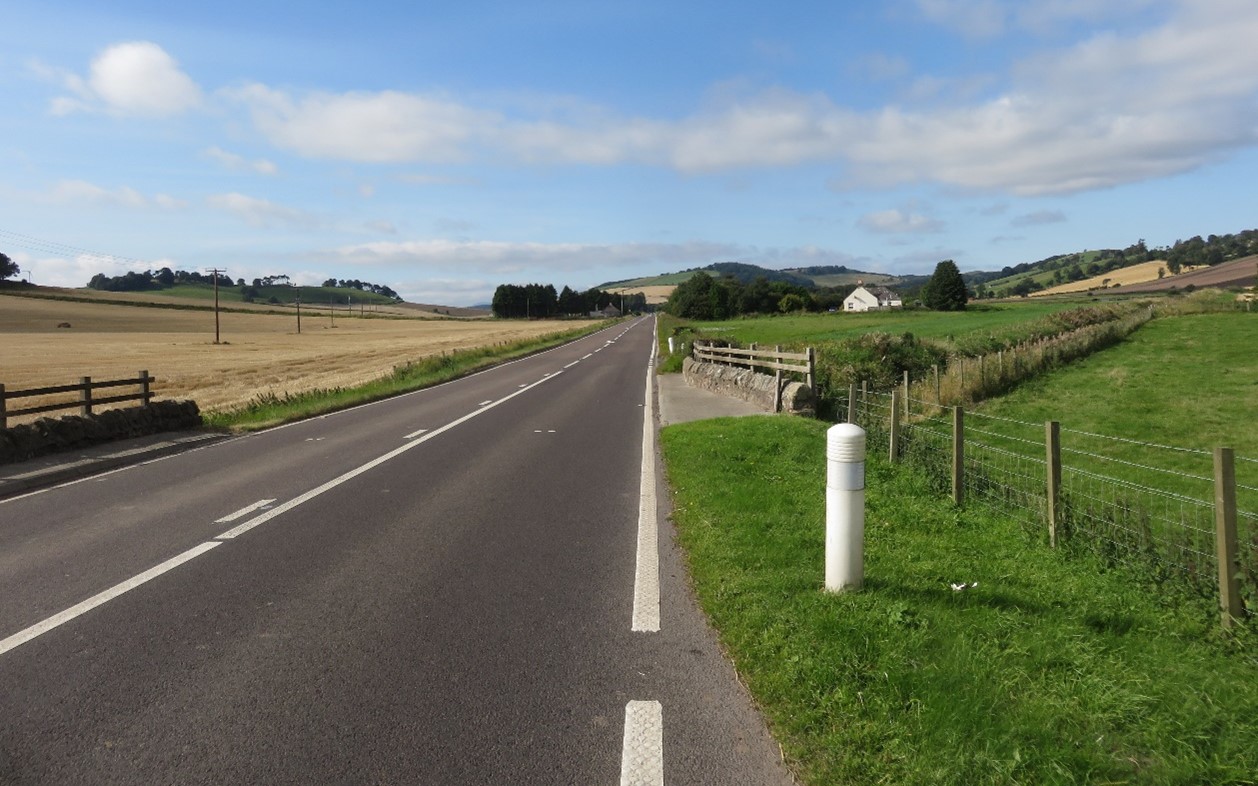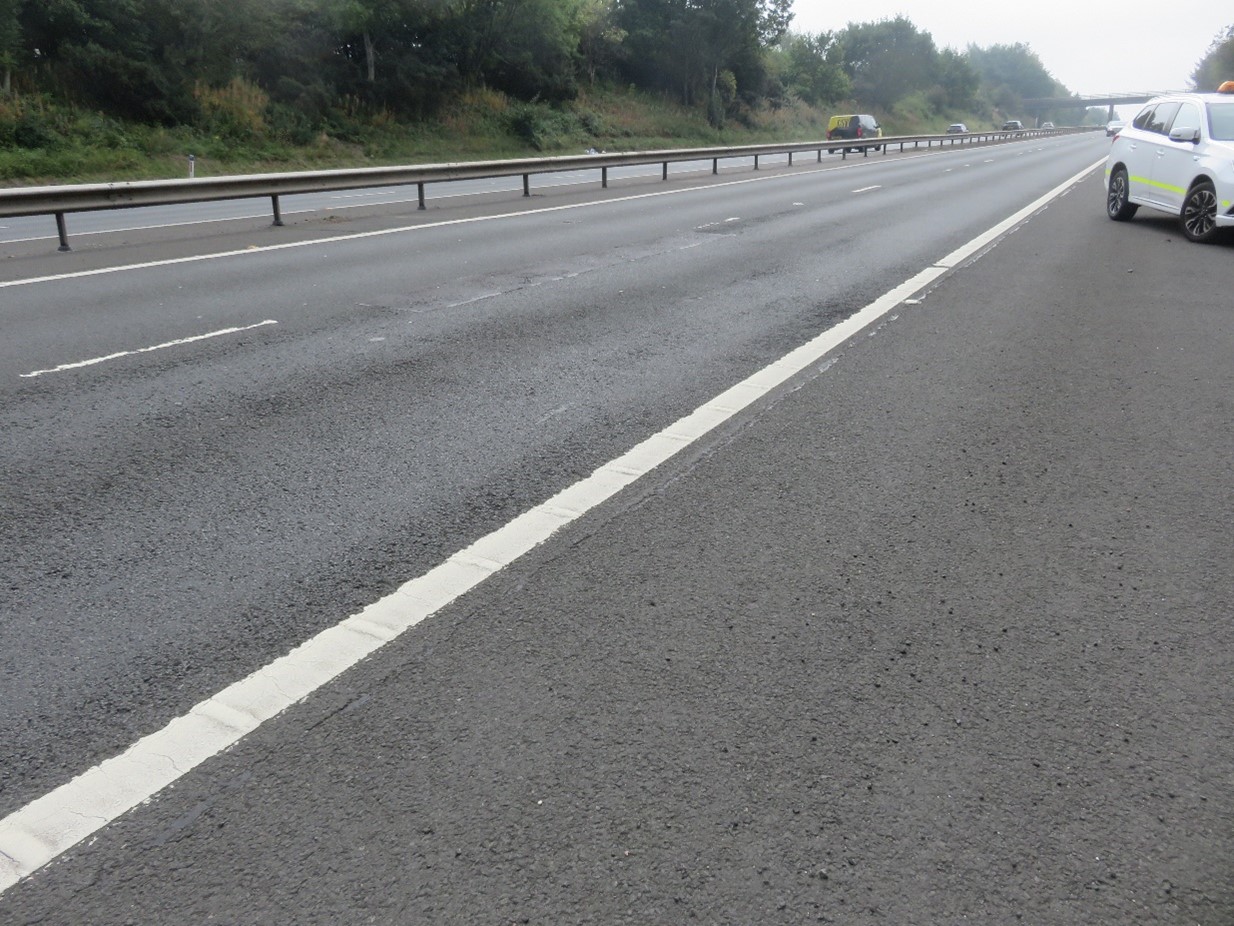Discussion
General observations
Cold load ends
If asphalt is allowed to cool to too low a temperature, then adequate compaction will not be achieved on site. The affected material will possess a lower density and higher air voids content when compared to the rest of the mat. These areas are often referred to as ‘cold spots’ and are known to retain water following rainfall and take longer to dry out. Moisture damage is known to cause ravelling or disintegration of the asphalt mortar leading to aggregate loss. Figure 4-1 shows two distinct areas where cold spots have been replaced at site IP16. The bottom right-hand corner of the image shows material with an open texture that is continuing to deteriorate. The PMS system AMPS, shows that IP16 received a structural inlay containing 220mm of base and binder material, and supports the observation that the defects are confined to the surfacing.
It is intended that the recent introduction and use of digital technology (McHale, et al) will be used to monitor and improve the quality of asphalt paving in Scotland.
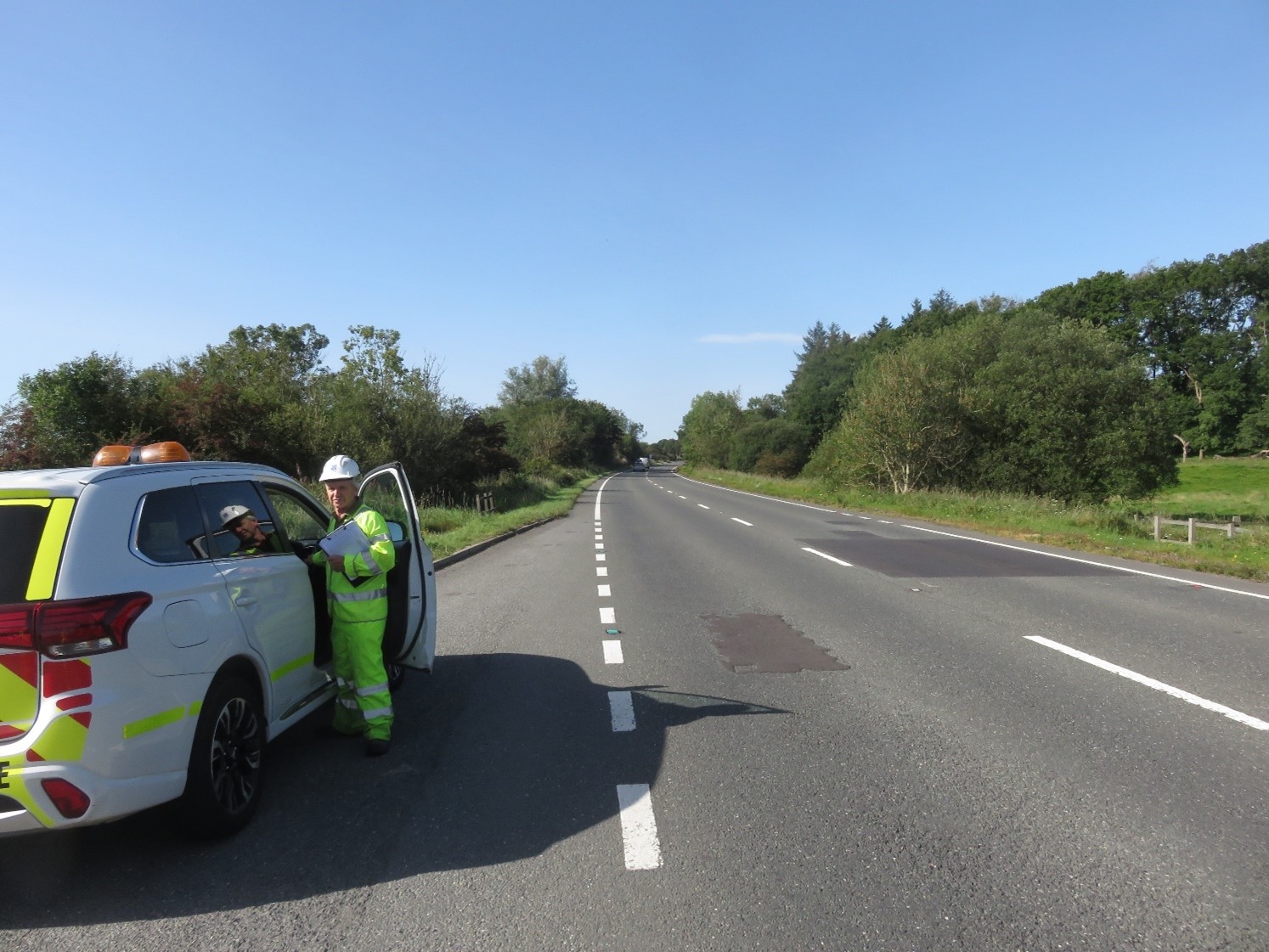
Roundabouts
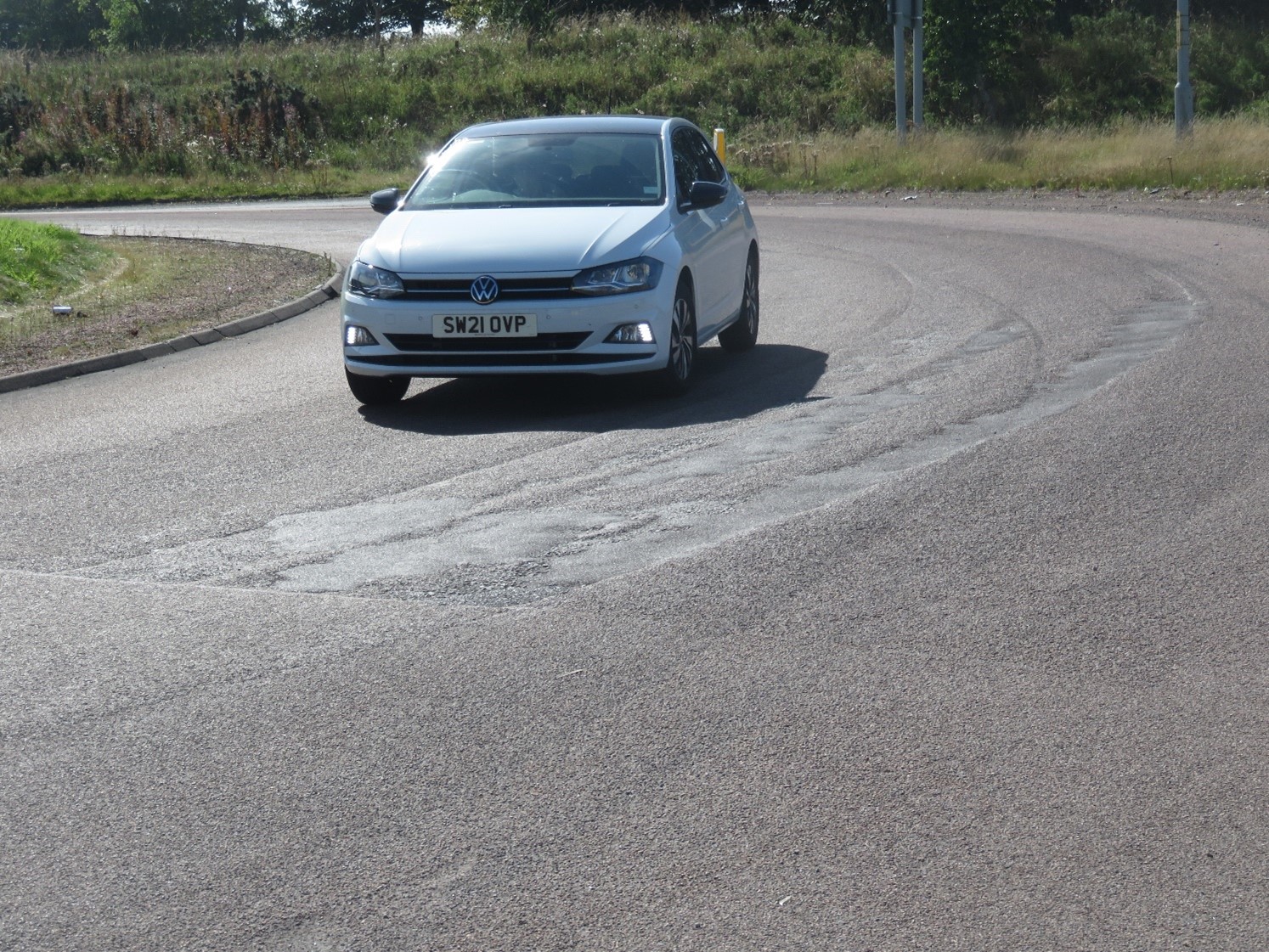
Figure 4.2 shows that a 6mm TS2010 surface course at IP40b has stripped under the braking and turning stresses imposed by HGVs. A recommendation of the 2021 SIP survey was to review the performance of surfacing on roundabouts to ensure that the optimum mixtures were being selected and installed correctly. A second roundabout site (IP36) also contained a 6mm TS2010 and was reported to have been replaced after only two years in service. It has been speculated that the surface characteristics of 6mm mixtures may provide enhanced grip that renders them vulnerable to high shear stresses and subsequent stripping und heavy traffic. Anecdotal evidence suggests that 10mm mixtures may perform better that 6mm mixtures. Where particularly high turning stresses are anticipated, it is possible that an HRA surface course may provide the most durable solution.
Inadequate support
Some of the schemes visited exhibited defects in areas where a shallow inlay had been selected in preference to a deeper inlay. Figure 4-3 shows defects at Site IP27 which are associated with inadequate structural support. According to AMPS, Site IP27 was treated with a 50mm inlay. In this particular instance, the SIP team had access to video footage of the scheme prior to treatment being carried out. The video footage clearly showed that the foundation in this area was weak. This site highlights the importance of conducting a rigorous pavement assessment as part of the design process and the need to address areas identified as providing poor foundation support.
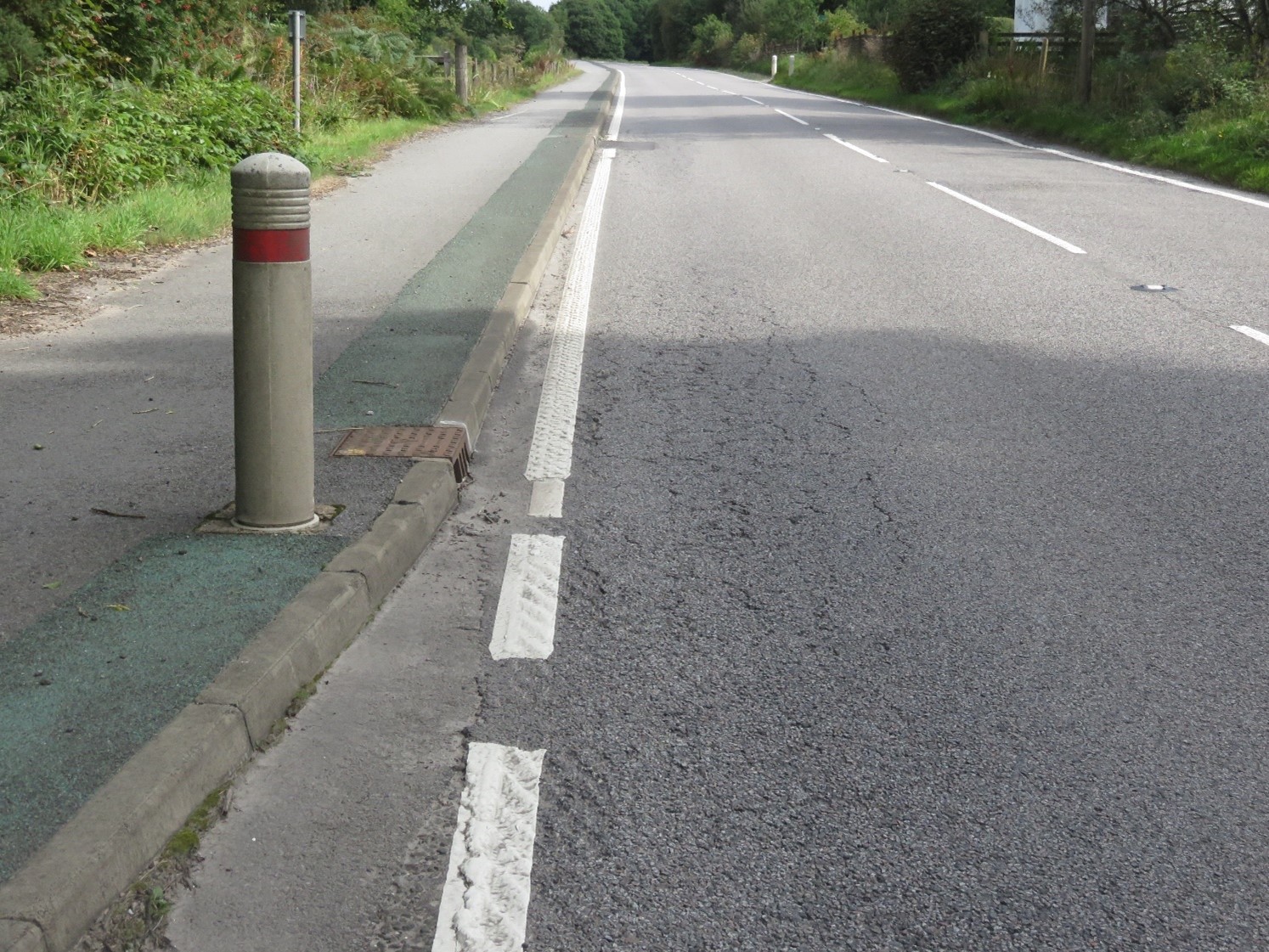
Carriageway markings
Two observations were made in association with carriageway markings: delamination and mechanical scouring. The former related to new carriageway markings that had failed to bond with the previous marking material that had not been removed. Figure 4-4 shows a significant length of material that had debonded, and the insert shows a close-up of some of the new material that was retained. The latter observation concerned the mechanical technique employed to remove existing carriageway markings. As shown in Figure 4-5, the method resulted in the diagonal abrasion or scouring of the existing surface course material. In some instances, the road surfacing material had been damaged with the removal material.
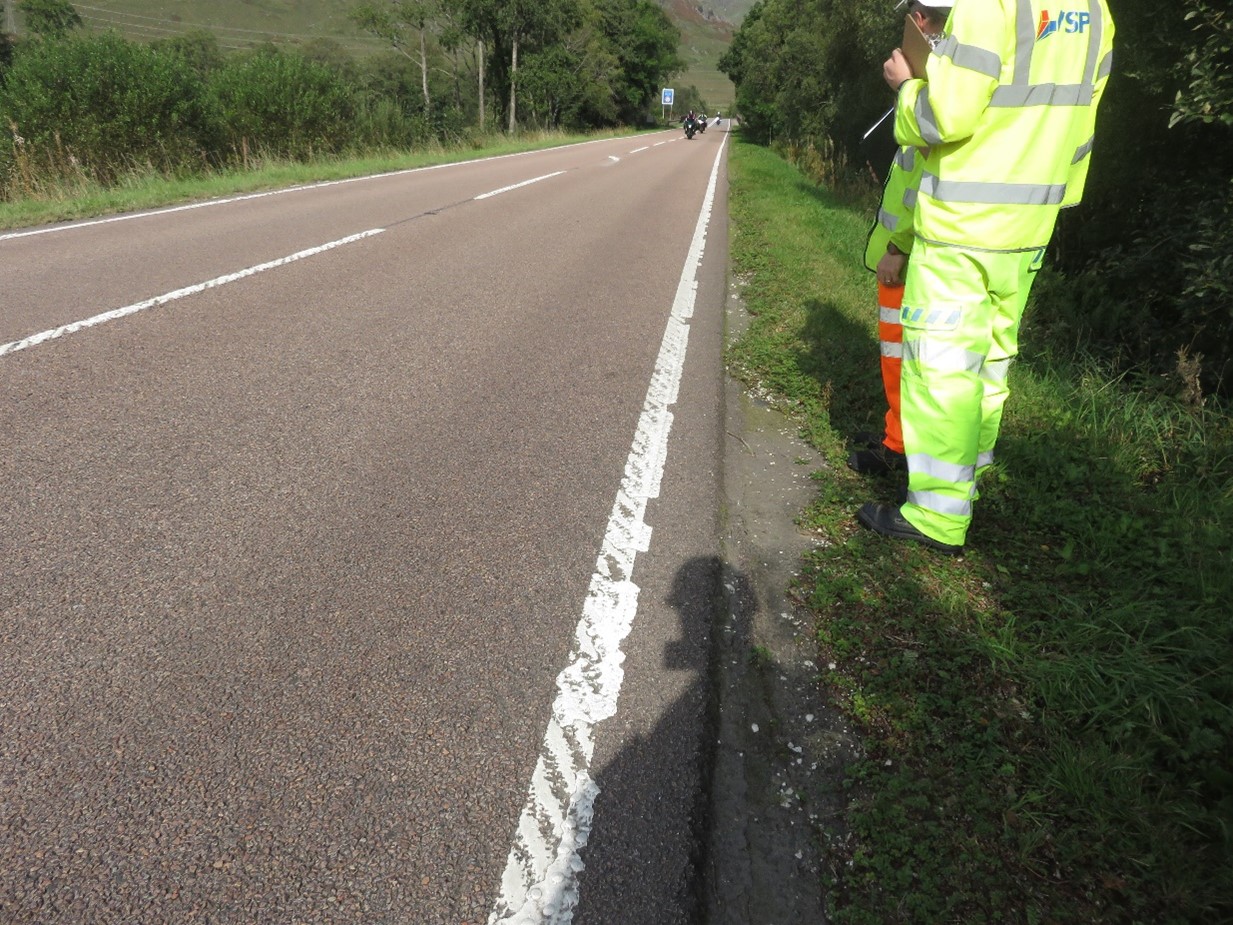
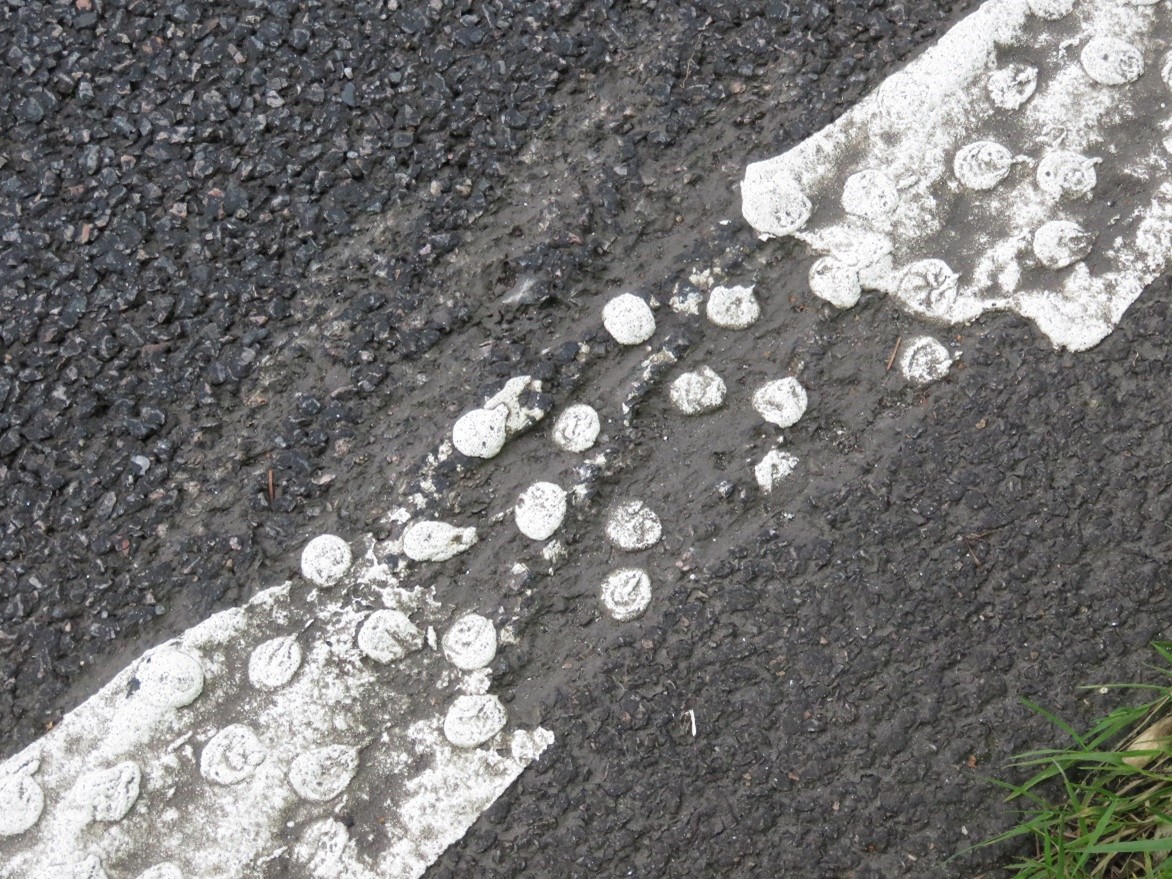
Excellent performance
87% of the sites were assessed to be Good or Excellent by the panel and over a third of these sites (16) were assessed as Excellent. The latter mark is only given if the material inspected is assessed to be defect free. Figure 4-6 shows one of the sites that was assessed to be defect free. These positive results confirm that TS2010 provide enhanced durability when compared to some Clause 942 materials and those inspected during previous surveys.
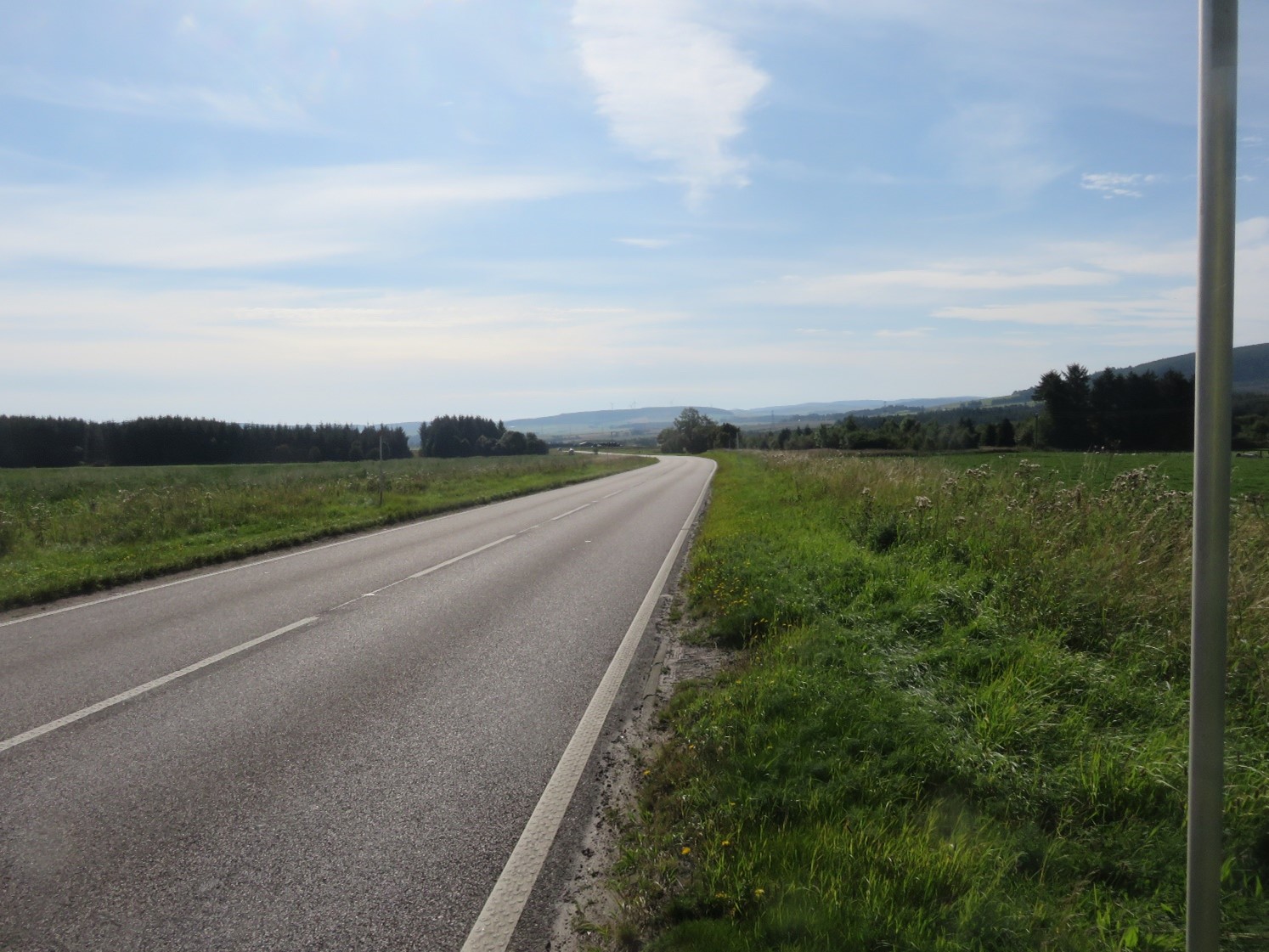
Sites of interest
At the request of Transport Scotland, three additional sites of interest (SoI) were visited as part of the 2023 survey. One of the sites contained a new surface course that contained a biogenic binder which was being trialled on a section of the A92. The mat shown in Figure 4-7 was assessed as Excellent by the panel and was defect free at the time of the inspection. The second site was located on the M9 and contained a TS2010 which was laid in 2013. The site was given an overall Acceptable mark with faults including cracking, aggregate loss, variability and joint defects. The site is shown in Figure 4-8 and exhibited defects associated with cold loads. However, on closer inspection, longitudinal cracking (insert, bottom right) was noted indicating possible structural issues. The third site contained a four-year-old surface course that contained rubber from recycled tyres. The site was assessed as Medium with faults including aggregate loss, variability and open joint.
